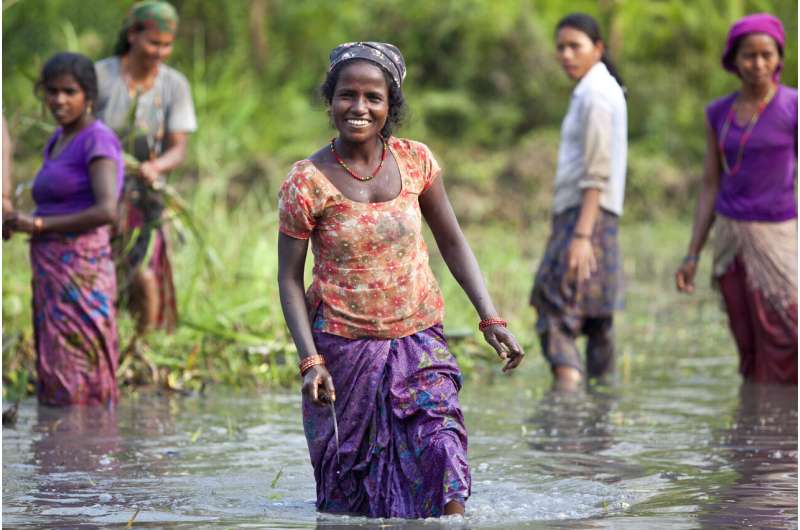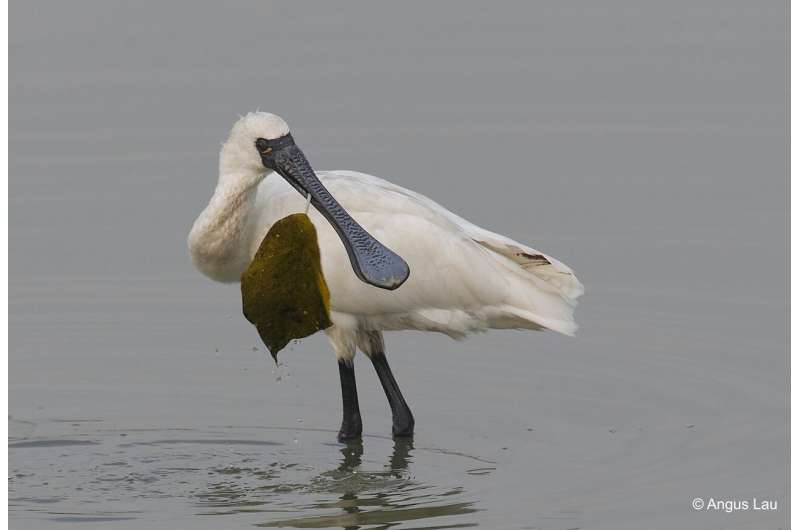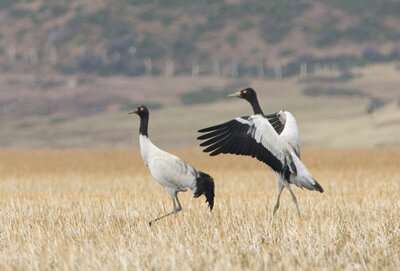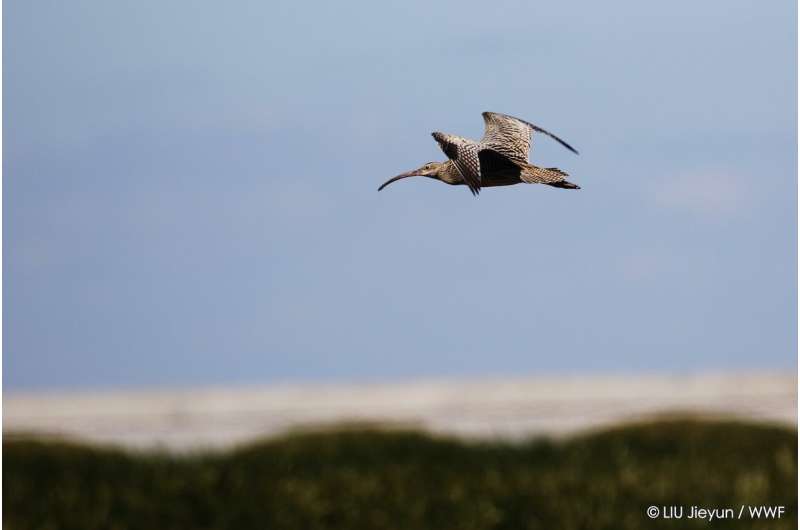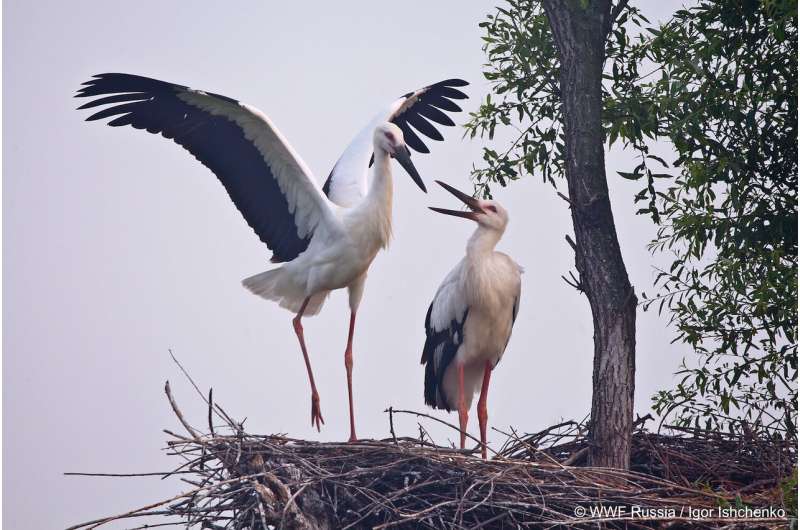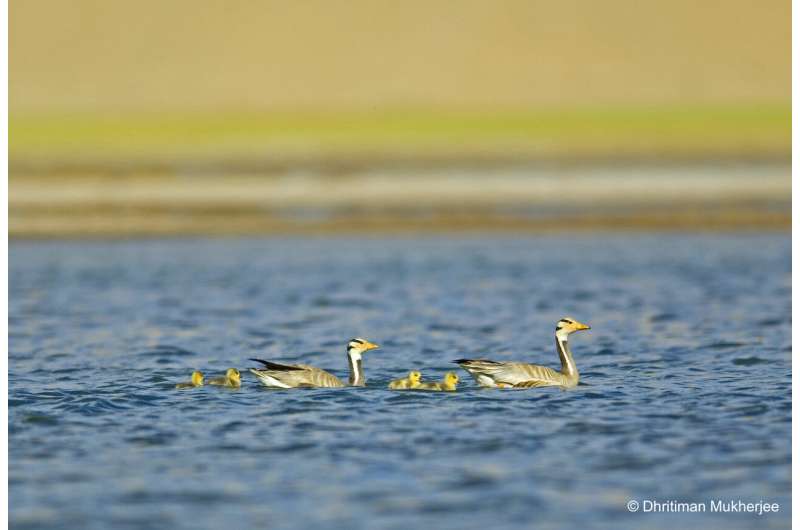Conserving wetlands is vital for people throughout the Flyways. Credit: WWF Nepal, Hariyo Ban Progam
World Migratory Bird Day on May 9th was created to raise awareness about this alarming trend and to highlight the need for urgent action to conserve the wetlands that are the essential stepping stones along the world's great migratory routes—and provide vital ecosystem services for millions of people.
So there is no better day to officially launch our new Asian Flyways initiative, which will see WWF partner with communities, other conservation organizations, businesses, investors, and governments to tackle the systemic threats to the region's wetlands—and so safeguard iconic migratory species. With our wide network of experts and offices in many flyway countries, WWF will work with countries to prioritize and protect their wetlands, which will help them to achieve their SDG targets.
"Supporting wetland and migratory bird conservation is essential not only to save these amazing species but also to ensure our future water and food security," added Wikramanayake, who is also Director of Wildlife & Wetlands, WWF-Hong Kong.
So along with launching the initiative strategy, we also chose to celebrate this year's first World Migratory Bird Day (since there will be another one in October when the birds fly south in search of warmer weather to complete their annual round trip) by asking colleagues from different flyway sites to share their thoughts on some of the most important bird species along the flyways and the urgent need to protect and restore the wetlands they—and we—depend on.
Black-faced spoonbill. Credit: Angus Lau
Black-faced spoonbill
A large wading bird with a distinctively spoon-shaped beak, the Black-faced spoonbill is endemic to the East Asian Australasian Flyway (EAAF). This species was brought back from the brink of extinction through great conservation effort. It is, nevertheless, still classified as Endangered because of loss of habitat due to industrial development, wetland reclamation and pollution. It's not just unfortunate for this special bird, but also the people who make a living from the wetlands.
Fion Cheung, Flyway Planning and Training Manager of WWF Hong Kong says "In the past few years, we've seen cases where Black-faced Spoonbills were injured by hidden traps in fish ponds, either intentionally or accidentally in Hong Kong. Despite the successes in conserving Black-faced spoonbill, there are still a lot of things for us to do to protect the species all across the flyway."
Black-necked cranes. Credit: Lloyd Raleigh
Black-necked crane
Black-necked cranes migrate from the Tibetan Plateau to the valleys of the Himalayan Mountains, and are part of the culture of the people in the region. In Bhutan, the crane is considered a sacred, heavenly bird, and associated with the six symbols of longevity connected to the popular Buddhist folklore painting of Tshering Namdruk. Black-necked cranes are classified as Vulnerable by IUCN because they exist as a single small population that is in decline due to the loss and degradation of wetlands and changing agricultural practices in both its breeding and wintering grounds.
Sonam Choden, Programme Director of WWF Bhutan, says, "Local communities have lived in harmony with cranes for centuries, which has helped its conservation in Bhutan. But increasing human disturbances from developmental activities are threatening their habitats. There is a need for improved protection and management through landscape level conservation, community stewardship and new partnerships for the long term sustainability of the flyway."
Far Eastern curlew. Credit: Liu Jieyun / WWF
Far Eastern curlew
This large shorebird with an awkwardly long and curving bill was recently up-listed as Endangered in the IUCN's red List because its populations are still undergoing rapid declines. Over 80% of its population is estimated to have been lost in the past three generations, driven primarily by habitat loss and degradation in the Yellow Sea Ecoregion. The species breeds on open mossy or transitional bogs, wet meadows, and along swampy shores of small lakes. The non-breeding habitats are mostly coastal wetlands, including estuaries, mangrove swamps, saltmarshes and intertidal flats, where they feed on invertebrates. These habitats are not only important for Far Eastern curlew and many other important species, but also serve as a natural buffer for people, helping to protect communities from natural disasters.
Yimo Zhang, director of water practice with WWF China says, "Far Eastern Curlew breed in Northeastern Asia, including Russia and Mongolia, and most of the population winters in Australia, connecting both ends of the EAAF. The Yellow-Sea Ecoregion is one of the most important stop-over sites during their migration, but much of the habitat there has been lost. This is why it was so important for the Yellow Sea wetlands to be recognized as World Heritage sites."
Oriental stork. Credit: Igor Ishchenko / WWF-Russia
Oriental stork
The Oriental stork is the winged symbol of the Amur River. This beautiful bird is an indicator of a health of the freshwater ecosystem of the Amur. In Russia, the stork is a symbol of a happy addition to the family. Not many people know that these birds are monogamous, faithful to each other, and demonstrate remarkable parenting behaviour. 95% of Oriental stork breeding sites are located in Russia and the Northeast China, and its wintering grounds are in the Yangtze River valley in China. The Oriental stork is classified as Endangered by IUCN since they are facing continuous habitat loss due to human activities. WWF has been working in a variety of ways to conserve Oriental storks, including erecting artificial tripods for the stork nests, conducting fire preventive treatment for the trees with nests, tracking chicks with satellite transmitters and monitoring the bird flyways.
Oxana Nikitina, coordinator for freshwater ecosystem conservation of WWF Russia says, "The Oriental stork is very sensitive to water and soil pollution, draining floodplains, and climate change. Currently, wetland declines in China, annual fires in Russia and insufficient food supply are all threatening the future of the Oriental Stork."
Bar-headed goose. Credit: Dhritiman Mukherjee
Bar headed goose
The bar-headed goose is an iconic species of the Central Asian Flyway (CAF). This large bird is a real ambassador to connect different regions and also an ideal indicator of the health of the flyway's wetlands because its breeding range in Central Asia extends from Afghanistan to Mongolia, while its wintering covers large parts of South and Southeast Asia, from India to Vietnam with occasional vagrants recorded as far away as Guam and Micronesia in the South Pacific.
Pankaj Chandan, Team Leader of Western Himalayas Landscape, Species & Landscape Programme with WWF India says, "Migratory birds are excellent ambassadors for peace and biodiversity conservation around the world. Bar-headed Goose are widely distributed along the CAF and they have been introduced in many nature education programmes raising the public's awareness about migratory birds and why we must conserve them."
Which ties in with overall theme of this year's World Migratory Bird Day—"Birds Connect Our World." This highlights the importance of conserving flyway wetlands and how critical it is for people that healthy wetlands and migratory birds survive.
Provided by WWF
